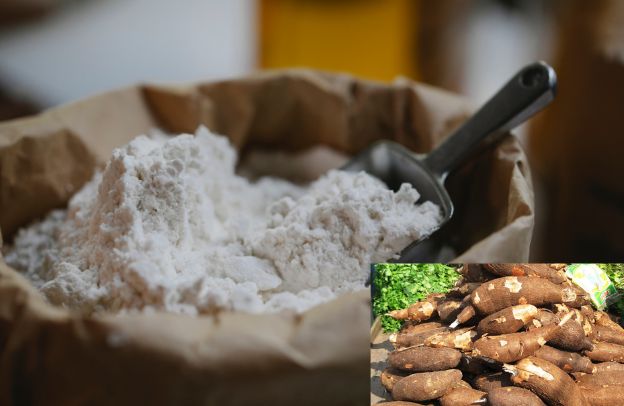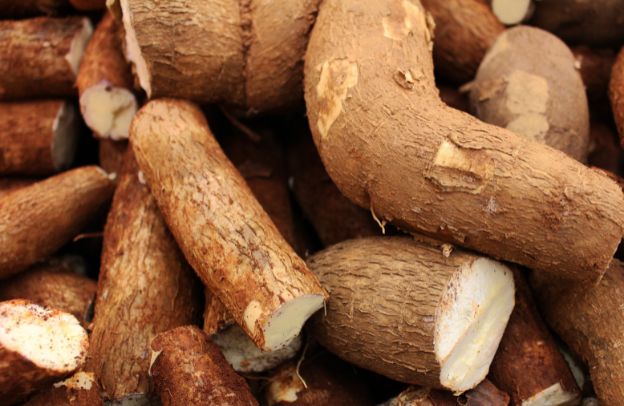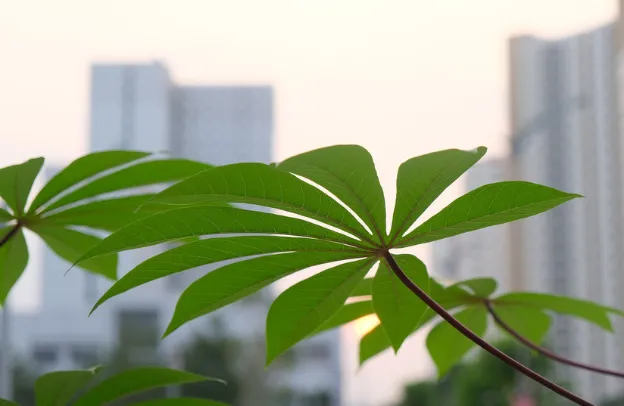Managing Water Resources in Cassava Farming: Tips for Small-Scale Farmers in Nigeria

Water is an essential resource for cassava farming, a vital crop for small and medium-scale farmers in Nigeria. However, managing water resources can be a significant challenge for these farmers due to the limited availability of water and the high cost of irrigation systems.
Without proper water management, cassava farmers risk reduced crop yields, lower-quality produce, and even total crop failure. This article aims to provide tips and strategies for small and medium-scale farmers in Nigeria to manage water resources effectively in their cassava farming operations.
By implementing these techniques, farmers can improve their crop yield, reduce water waste, and maximize their profits. Read on to learn more about managing water resources in cassava farming.
Understanding Water Requirements of Cassava Farming
Cassava requires a significant amount of water for proper growth and development. The water requirements of cassava vary at different growth stages. During the first three months after planting, cassava requires moderate amounts of water. In the subsequent three months, the water needs of cassava increased significantly. Finally, during the last three months, cassava requires the highest amount of water to ensure proper root development.
Several factors affect the water requirements of cassava. Soil type, temperature, humidity, and wind speed are some of the factors that determine how much water cassava needs. For example, sandy soils require more frequent irrigation than clay soils because they drain water faster. High temperatures and low humidity increase the water needs of cassava, while strong winds can cause water loss through evapotranspiration.
Estimating water requirements is critical for efficient water management in cassava farming. Several methods can be used to estimate the water requirements of cassava. The most common methods include crop evapotranspiration (ETc) and pan evaporation (Epan).
Crop evapotranspiration estimates the amount of water needed by the crop, while pan evaporation measures the amount of water lost through evaporation from a standard pan. These methods help farmers determine how much water to provide to their cassava crops at different growth stages.
Sources of Water for Cassava Farming
Cassava farming can rely on several sources of water, including rainwater, surface water, groundwater, and irrigation.
Rainwater is the most natural and cost-effective source of water for cassava farming. It provides water to the crops at no cost and is readily available during the rainy season. Farmers can harvest rainwater using techniques such as catchment systems and ponds, which can help reduce reliance on other water sources.
Surface water is another important source of water for cassava farming. It includes rivers, streams, and lakes that farmers can use to irrigate their crops. Surface water is often used in combination with irrigation systems to provide water to crops during the dry season when there is no rainfall.
Groundwater is water that is stored beneath the earth’s surface. It is often accessed through wells and boreholes and is an essential source of water for cassava farming. Groundwater is a reliable source of water that can be used throughout the year, but its availability depends on the geology and hydrology of the area.
Irrigation is the process of artificially supplying water to crops. It is a common source of water for cassava farming, especially in areas with limited rainfall or unreliable water sources. Irrigation systems can include sprinklers, drip irrigation, and flood irrigation, among others.
Although it can be expensive, irrigation can help farmers control the amount of water provided to the crops, ensuring optimal growth and development.
Techniques for Efficient Water Use in Cassava Farming
Efficient water use is crucial in cassava farming, particularly for small and medium-scale farmers who face water scarcity and high irrigation costs. Some techniques for efficient water use in cassava farming include:
Mulching: Mulching involves covering the soil surface around cassava plants with organic materials such as grass or leaves. Mulch helps reduce water loss through evaporation, retain moisture in the soil, and control soil temperature, reducing the water requirements of cassava.
Conservation tillage: Conservation tillage is a technique that involves disturbing the soil as little as possible to reduce water loss through soil evaporation. This technique helps maintain soil moisture and reduces the water requirements of cassava.
Crop rotation: Crop rotation involves planting different crops in a particular sequence on the same land. This technique helps improve soil health, reduce soil erosion, and improve water retention capacity, reducing the water requirements of cassava.
Use of drought-resistant cassava varieties: Planting drought-resistant cassava varieties is an effective strategy for managing water resources in cassava farming. These varieties have evolved to tolerate water stress, enabling them to survive with less water.
They have deep roots that can access groundwater, and their leaves are often smaller, reducing water loss through transpiration.
These techniques can help small and medium-scale farmers in Nigeria manage water resources efficiently, reduce irrigation costs, and improve crop yield. By using these techniques, farmers can ensure that their cassava crops receive adequate water while conserving water resources.
Water Management Strategies for Small and Medium-Scale Farmers
Small and medium-scale farmers in Nigeria can adopt several water management strategies to ensure efficient water use in cassava farming. Some of these strategies include:
Monitoring soil moisture: Farmers should monitor soil moisture regularly to ensure that their cassava crops receive the optimal amount of water. This can be done using tools such as soil moisture sensors, which provide accurate readings of soil moisture levels. By monitoring soil moisture, farmers can avoid overwatering or underwatering their crops, which can result in reduced yields.
Irrigation scheduling: Irrigation scheduling involves determining when and how much water to apply to crops. Farmers can use tools such as weather forecasting and evapotranspiration models to schedule their irrigation activities. By applying the right amount of water at the right time, farmers can ensure that their cassava crops receive adequate water for optimal growth and development.
Use of appropriate irrigation methods: Farmers should select irrigation methods that are appropriate for their farming conditions.
For instance, drip irrigation is suitable for areas with limited water resources, while flood irrigation is suitable for areas with abundant water resources. By selecting the right irrigation method, farmers can minimize water loss and maximize water use efficiency.
Water storage and harvesting: Farmers can store and harvest water during the rainy season for use during the dry season.
Techniques such as rainwater harvesting and the construction of small-scale dams and ponds can help farmers store water for later use. This strategy can help farmers cope with water scarcity during the dry season, reducing irrigation costs and improving crop yield.
In conclusion, water management is critical in cassava farming for small and medium-scale farmers in Nigeria. By adopting these water management strategies, farmers can ensure efficient water use, reduce irrigation costs, and improve crop yield.
Challenges and Solutions in Managing Water Resources for Cassava Farming
Despite the numerous benefits of managing water resources efficiently in cassava farming, small and medium-scale farmers in Nigeria face several challenges. Some of these challenges include:
Challenges faced by small and medium-scale farmers:
- Lack of access to water resources: Many small and medium-scale farmers in Nigeria do not have access to adequate water resources for cassava farming. This can limit their ability to irrigate their crops and reduce their yields.
- High irrigation costs: Irrigation costs can be a significant burden for small and medium-scale farmers, particularly those who rely on expensive irrigation methods such as pumping water from deep wells.
- Limited knowledge and skills: Many small and medium-scale farmers in Nigeria lack knowledge and skills in water management techniques, making it challenging to manage water resources efficiently.
Solutions to the challenges:
- Access to water resources: Small and medium-scale farmers can explore alternative sources of water, such as rainwater harvesting and the construction of small-scale dams and ponds. They can also collaborate with government agencies and non-governmental organizations to access irrigation infrastructure and facilities.
- Reduction of irrigation costs: Small and medium-scale farmers can adopt low-cost irrigation methods such as drip irrigation and rainwater harvesting. They can also form cooperative groups to share the cost of irrigation infrastructure.
- Knowledge and skills development: Government agencies and non-governmental organizations can provide training and capacity-building programs on water management techniques for small and medium-scale farmers. This can improve their knowledge and skills in water management, enabling them to manage water resources efficiently.
In conclusion, managing water resources efficiently in cassava farming can be challenging for small and medium-scale farmers in Nigeria.
However, by adopting appropriate water management techniques and collaborating with relevant stakeholders, these challenges can be overcome, leading to improved crop yields and increased incomes for farmers.






